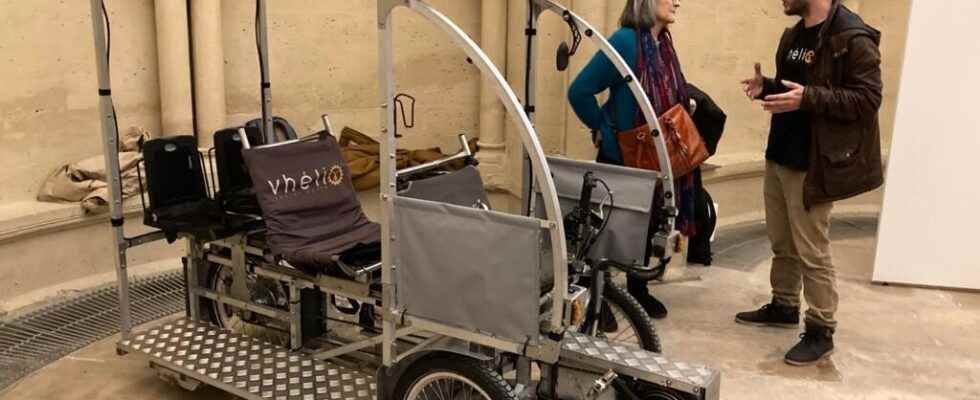What will our vehicles look like in the future? No flying car (at least for the moment), but rolling objects between the bike and the car, light, low in energy consumption and without greenhouse gas emissions. Essential to keep moving without contributing to climate change. To imagine them, Ademe, the Energy Transition Agency, has launched a challenge to dozens of teams.
It’s a funny electric bike with seats placed on a frame, like a small three-wheeled cart, topped with a solar panel as a roof. It is rather comfortable and handy, but requires a little time to get started for Pierre, who has come to try the model.
The vhélio, that’s its name, can carry several passengers or 200 kg of load. The idea of Grégory Barrier, initiator of the project in 2020, was to create an intermediate vehicle between the bicycle and the car. “JI was tired of not finding an object that suited me to transport my children, or equipment, to pick up someone at the station. Tired of all that, I told myself that I would simply make it. One of the major challenges of the years to come is to be able to move two or three adults in the same vehicle without knowing how to systematically use the car.. »
His idea corresponds to what Gabriel Plassat, innovation and mobility specialist at Ademe, the Ecological Transition Agency, is looking for with this challenge to design the transport of the future. ” Transport is the main emitter of greenhouse gases in France. This represents more than 30%. In the city, public transport, walking and cycling make it possible to solve most daily trips. On the other hand, as soon as you leave the city in dense places, the car is 90 to 95%. So, it is to get out of this dependence on oil automobiles that we launched this approach. »
Alternatives to the car
The prototypes therefore all have in common that they are light and more economical, like the MOB 4.0 by retired Patrick Tonnelier, who created a sort of four-wheeled electric bicycle. ” It goes 40 km/h, we have 100 km of autonomy and you can drive everywhere. Myself, I did the Col de l’Iseran, I did the Mont Ventoux. It is an optimized bike that weighs 60 kilos. It’s nothing to move, it costs me 0.25 euros for 100 kilometers. I come home at night, put it on charge, sleep, and do 100 kilometers again the next day. »
These vehicles will not replace the car, but must provide an alternative for daily journeys. They must provide an alternative by emitting much less greenhouse gases, even compared to a heavier, larger electric car that requires more energy for its charge, and more rare earths for its batteries.
